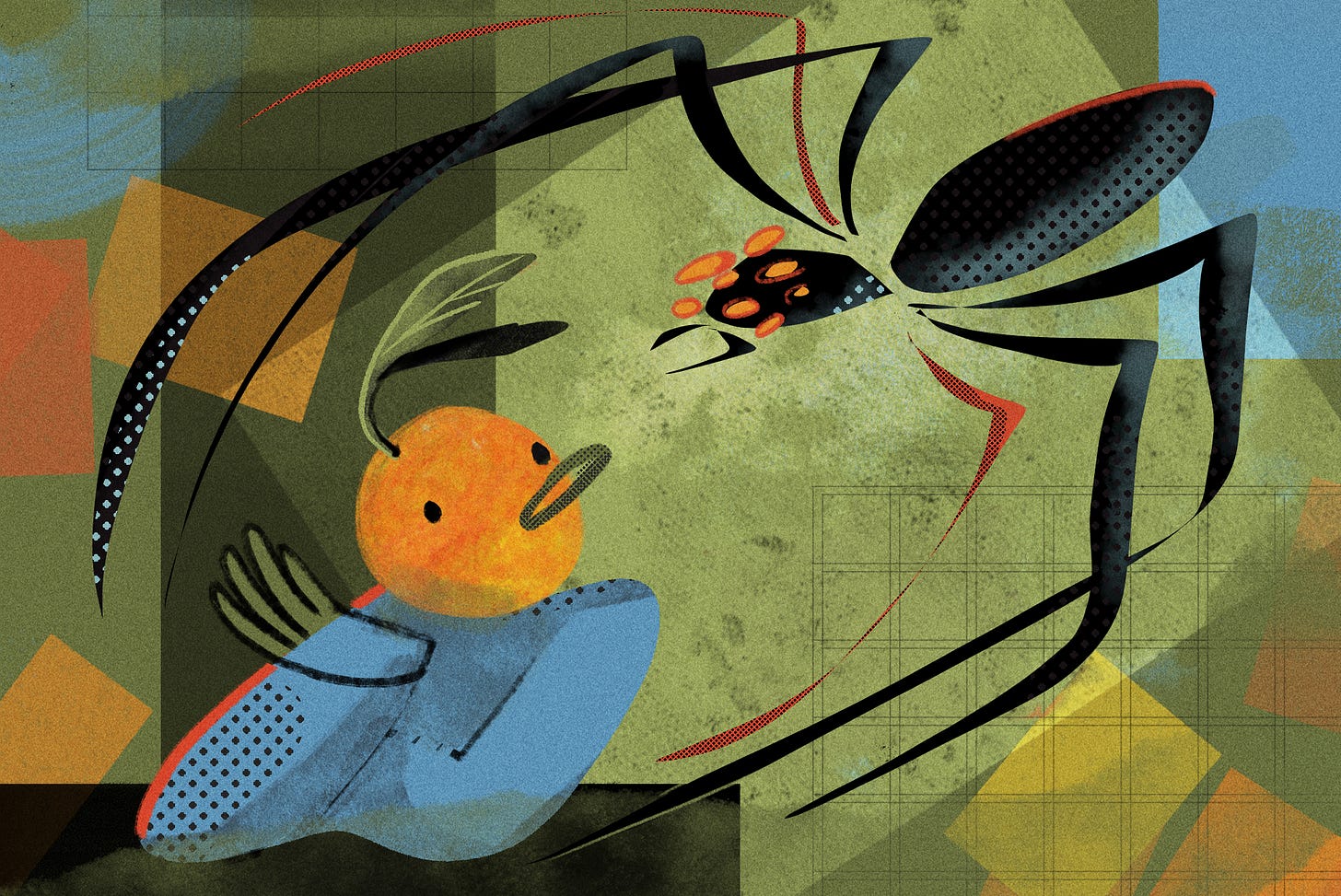How Does the Antagonist Respond to Your Main Character?
Enter the resistance | First Draft November: Day 5

→ This week’s goal: Power through Act One and get to the place where your character makes a decision they can’t go back on.
→ Word target: 12k words by the end of the week.
Hi writers!
On Monday, you dug into your protagonist’s yearning and what’s missing in their life. Today, we’re looking at what happens when that yearning collides with resistance. Without opposition, there’s no story. And without an antagonist, desire has nothing to push against.
You’re going to hear me say this a lot this month: We want tension here, people! And at this early stage, the tension is not just for the reader; it’s for you too! If we want to keep up the momentum to write every day and get our draft to 50k by November 30, we need to keep adding tension to our story so we don’t get bored.
So here is today’s guiding question:
Who is your antagonist or antagonistic force? How does the antagonist respond to your main character?
An antagonist isn’t always a villain. Sometimes it’s a rival, sometimes it’s a parent, sometimes it’s an institution, or even the protagonist themselves. An antagonist or antagonistic force is simply someone or something actively standing in the way of what your protagonist wants.
If you don’t yet know what your character wants, that’s totally okay at this point! Playing around with what an opposing force looks like might help you tease out what your protagonist is secretly longing for. Just remember: Conflict propels the story forward.
For example, if your protagonist wants love, the antagonist might be the fear of intimacy or a rival competing for the same relationship. If your protagonist wants freedom, the antagonist might be a domineering parent or the reality of bills they can’t ignore. If your protagonist wants success, the antagonist might be a boss who underestimates them or their own lack of confidence.
Notice how these examples swing between external antagonists—people, systems, obstacles in the world—and internal antagonists—fear, shame, self-sabotage. The richest novels usually weave in both: something pressing in from without, and something festering from within. And that clash between internal and external forces is always ripe for tension.
I want to share one of my favorite prompts from The 90 Day Novel by Alan Watt. This helped me identify who my antagonist was when I was writing the early drafts of my novel. (Spoiler: It was my protagonist’s mother! A character I loved! A character that my protagonist loved! Sometimes these villains are sneaky.)
“Write a ten-minute dialogue between your hero and an antagonist. The hero wants something, and the antagonist is unwilling to give it to them. Play this out until one of them succeeds (or dies trying).”
Dialogue works because it doesn’t let us hide. In conversation, desires and resistance come out raw, often sharper than in description. Even if you never use the scene in your final draft, this prompt will show you how these two forces clash.
So today, let this question guide you: Who, or what, is standing in your protagonist’s way? And how does that force respond when pressed?
Don’t worry about making this clean or logical. Trust your intuition and follow your enthusiasm. The point isn’t to fully sketch out your antagonist yet. The point is to feel the resistance, to see what happens when your character’s desire meets opposition. Sometimes the sparks will surprise you—and that’s exactly what we want in a first draft.
Happy writing!
First Draft November is a free-for-all, month-long challenge for writers who are ready to get that novel they’ve been dreaming of on the page. Subscribe to get updates in your inbox!







11,000 total - 1000 this morning thanks for everyone who put this together such great teaching and community support!
Wonderful. Got another 2,000 this morning, crossing the 10K mark. Nailing down a guiding central question (conflict) for my protagonist helped, and keeping the yearning/wound in mind has also helped a lot in focusing characterization (dialog, thought, action, etc.). (Sadly, my protagonist will, literally, kill who she thinks is her antagonist.)